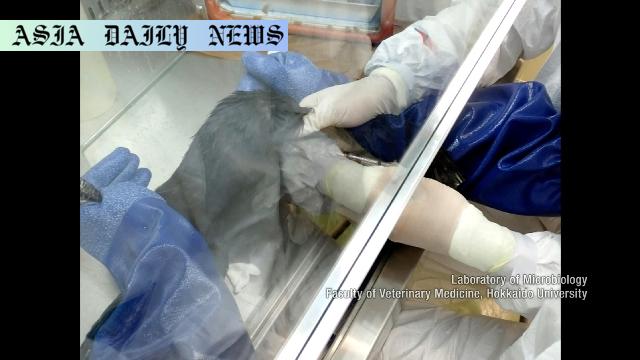Crows infected with H5N1 bird flu virus are dying quickly, spreading the infection to poultry farms, raising calls for action.

The Growing Threat of H5N1 in Crows
The H5N1 bird flu virus is increasingly proving to be a significant threat to both wildlife and poultry farming in Japan. Recent studies led by Hokkaido University reveal that crows, traditionally more resilient to such infections, are now highly susceptible to this strain. Alarmingly, infected crows are dying within six days due to the virus’s ability to spread beyond lungs and breathing tubes to vital organs such as the brain and bowels. The rapid progression and lethality of this strain mark a shift in its behavior compared to earlier variants, which primarily affected respiratory systems.
Crows’ Role in Poultry Farm Infections
As crows succumb to the new strain, their proximity to poultry farms has raised red flags among researchers. The Agriculture Ministry has documented instances of dead crows near farms in regions like Tokoname City, Aichi Prefecture, where poultry outbreaks have been confirmed. This points to a potential vector role played by crows in introducing the virus to poultry. Given their intelligence and resourcefulness, crows are often drawn to areas with easy access to feed, such as poultry farms, thus increasing the risk of transmission.
Scientific Evidence Supporting Transmission
The severity and resilience of the H5N1 virus spreading in Japan have been rigorously studied to highlight the evolving nature of the threat. Comparing the new strain with older ones, researchers note its heightened ability to penetrate organ systems and cause rapid death in hosts like crows. Since the virus can spread to various parts of a crow’s body, it potentially becomes more virulent and mobile, impacting ecosystems and farming communities alike.
Countermeasures and Mitigation Strategies
Experts, including Professor Sakoda Yoshihiro of Hokkaido University, are advocating immediate action to curb the spread of H5N1 from crows to poultry farms. One of their recommendations involves eliminating environments conducive to crow gatherings, such as cutting down trees surrounding poultry farms. This, coupled with tighter biosecurity measures like disinfecting tools and ensuring that poultry feed is not accessible to wildlife, can reduce the risk of contamination. Public awareness campaigns focusing on limiting waste that attracts crows could also help mitigate the spread.
Broader Implications of the Viral Spread
The potential role of crows in spreading H5N1 has broader ecological and economic implications. Poultry farming represents a significant industry in Japan, and outbreaks can disrupt food supply chains, heighten economic losses, and strain public health systems. Moreover, the virus’s adaptability and ability to affect multiple species underline a need for continuous research. There is also a risk that such virulent strains could someday jump to other bird species or mammals, necessitating global vigilance to prevent pandemic scenarios.
Conclusion
The recent H5N1 virus outbreak highlights the increasingly complex interplay between wildlife and human agricultural practices. While immediate countermeasures can help protect poultry farming, long-term solutions must focus on understanding and controlling virus evolution in wildlife populations. By addressing this challenge with urgency and collaboration, it is possible to mitigate the devastating impacts on livelihoods and public health.
Commentary
Understanding the Gravity of the H5N1 Virus Spread
The recent news about H5N1 rapidly spreading among crows and potentially threatening poultry farms is alarming. This evolving virus strain highlights not only the unpredictability of nature but also the fragility of our agricultural ecosystems. The research findings from Hokkaido University are crucial in shedding light on how this virus operates and underscores the need for immediate action to manage the situation.
The Importance of Vigilance and Proactive Strategies
What stands out in this situation is the adaptability of the virus, which now affects crows more severely than past strains. Given their close association with poultry farms, crows serve as a potential vector, and ignoring these dynamics can have severe consequences for the poultry industry. Efforts such as clearing trees and improving biosecurity at farms might seem inconvenient initially but are necessary steps to protect economic livelihoods and food security.
A Call for Informed Action and Collaborative Efforts
This issue also emphasizes the interconnectedness of ecosystems. Addressing the H5N1 spread isn’t just about protecting agriculture but also about preserving ecological balance and preventing broader public health crises. By combining scientific research with community awareness and government action, we can establish lasting solutions. The lessons from this outbreak could serve as a precedent for future biosecurity measures in various parts of the world.
Final Thoughts
The spread of the H5N1 virus through crows is a wake-up call. It reminds us of the delicate balance we must maintain between human activities and the natural world. By responding with both urgency and foresight, we can minimize the health and economic impacts of this crisis while preparing for those yet unseen.


